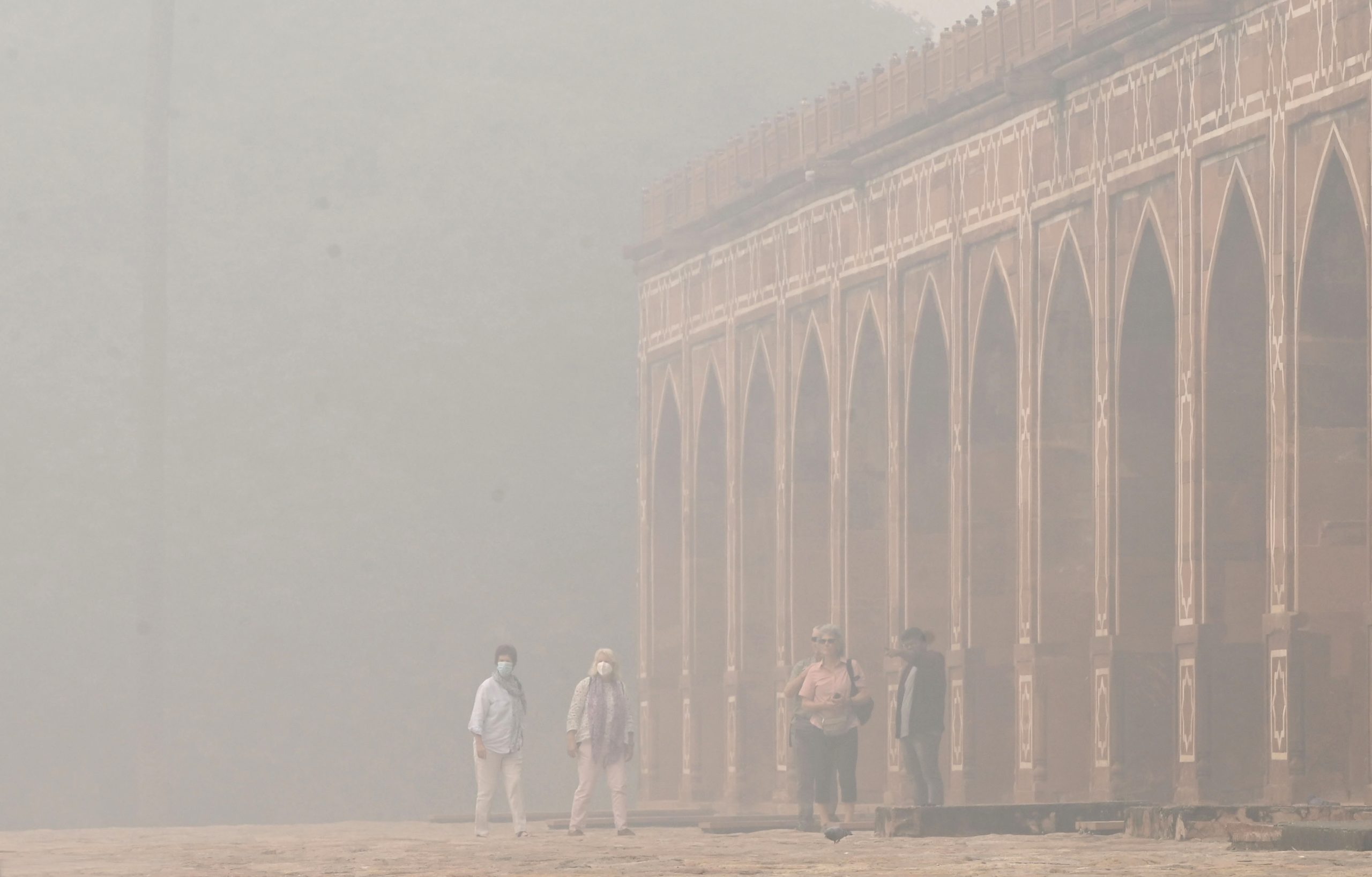Delhi’s air quality remained in the ‘severe plus’ category for the second consecutive day on Tuesday, with a thick layer of smog enveloping the city and reducing visibility significantly.
At 8 a.m., the national capital recorded an average Air Quality Index (AQI) of 488, classified as ‘severe plus,’ according to data from the Central Pollution Control Board (CPCB).
Several areas in Delhi exceeded the citywide average. Anand Vihar, Bawana, CRRI Mathura Road, and Narela registered the maximum AQI level of 500. Other locations also recorded dangerously high AQI levels: DTU at 494, Dwarka Sector-8 at 494, Jahangirpuri at 493, Mundka at 498, North Campus at 494, Punjabi Bagh at 495, RK Puram at 490, Shadipur at 498, and Wazirpur at 498. ITO, comparatively lower but still hazardous, recorded an AQI of 391.
The India Meteorological Department (IMD) issued a ‘yellow’ alert for the city, forecasting moderate to dense fog.
The toxic air also disrupted travel, with the Indian Railways reporting 22 delayed trains and nine rescheduled due to the poor visibility caused by the smog.
Several schools and colleges in the National Capital Region (NCR) switched to online classes due to the hazardous air quality. In-person attendance for Classes 10 and 12 was suspended until further notice. Delhi University and Jawaharlal Nehru University (JNU) also moved classes online, with physical attendance suspended until November 22.
The Supreme Court has directed all states in the Delhi-NCR region to immediately deploy enforcement teams to strictly implement Stage 4 of the anti-pollution Graded Response Action Plan (GRAP). The court emphasized that states are constitutionally bound to ensure a pollution-free environment and ordered that restrictions remain in force until further notice.
Under GRAP Stage 4, trucks are banned from entering Delhi unless carrying essential goods or running on clean fuel (LNG/CNG/BS-VI diesel/electric). Non-essential light commercial vehicles registered outside Delhi are also barred unless they use CNG, BS-VI diesel, or electric power. All construction activities—including highways, roads, flyovers, power lines, pipelines, and other public infrastructure—are suspended.
In an effort to combat the city’s hazardous air quality, Delhi Lieutenant Governor V.K. Saxena launched the Delhi Development Authority’s (DDA) anti-smog misting drive on Monday, overseeing a trial run in Dwarka.
“In light of the severe air quality index readings in Delhi, it is crucial that we adopt innovative and sustainable measures to protect the health and well-being of our residents,” said L-G Saxena during the launch.
“This anti-smog misting system is a significant step forward in our ongoing efforts to mitigate pollution and create a healthier living environment for all,” he said.
According to the CPCB, an AQI between 0 and 50 is considered ‘good’, 51 and 100 ‘satisfactory’, 101 and 200 ‘moderate’, 201 and 300 ‘poor’, 301 and 400 ‘very poor’, 401 and 450 ‘severe’, and above 450 ‘severe plus’.
(With input from agencies)




















